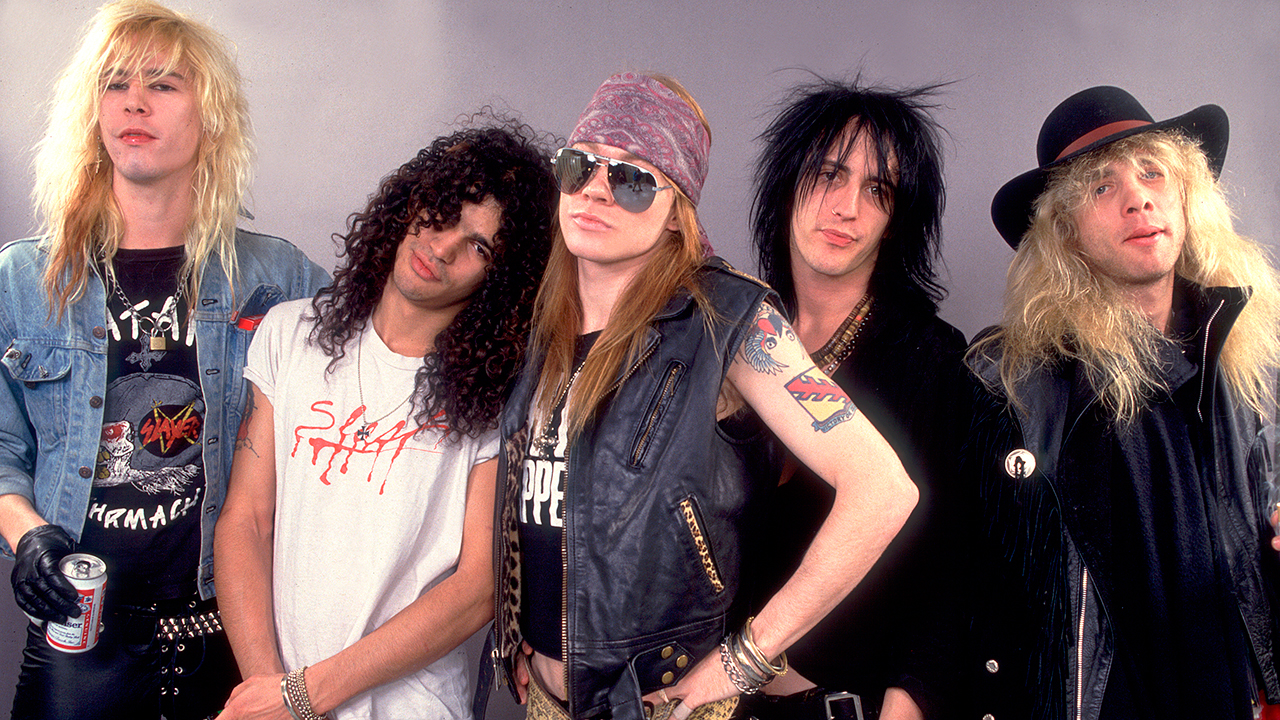At the height of their popularity, Guns N' Roses were referred to as ‘The Most Dangerous Band In The World’. But by the time they'd hit the mid 90s, having survived the excesses of the 80s and more ups and downs than the Himalayas, they'd still offered up only three and a half albums worth of original material. With the band's members ensconced in various degrees of personal – and inter-band – turmoil, Guns N’ Roses became seen as nothing more than a shambles. As a result, their creative output ground to a halt for 15 years.
Once, it had all been very different.
Arriving at a time when bland dance and ten-a-penny pop dominated the charts, Guns N’ Roses were like a whirlwind of thrilling, drug-fuelled hedonism when they first came to prominence. That was in 1987, with the release of Appetite For Destruction: arguably one of the greatest debut albums – not to mention one of the greatest rock albums – of all time.
Before that, it was a tale of banding together against the odds. Slash auditioned for Poison and an early version of GN’R; childhood friends Izzy Stradlin and Axl Rose were in an early LA Guns. Together they were Guns N’ Roses.
They stuck to their guns, got their chance on Sunset Strip and grabbed it. 1986 EP Live ?!*@ Like A Suicide caught the attention of UK mags, including Metal Hammer. They played three celebrated shows at London’s Marquee in June 87 and toured with Faster Pussycat, headlining at Hammersmith Odeon in October of that year. Taut, lean and muscular – full of angry hedonistic anthems one minute, capable of stunning sensitivity the next – it would be a hugely popular power ballad which, after single Sweet Child O’Mine took off, would finally set them in stone.
Capable of incendiary live shows, these five young rock brats really did walk it like they talked it. Tales of debauchery surrounded them, and those close enough knew it wasn’t just hype. They were the new saviours of metal, touring with Aerosmith and Mötley Crüe.
The first signs things might go awry came with the release of GN’R Lies, not least with the wildly misjudged One In A Million – listen back to those lyrics now and try not to wince. Then drummer Steven Adler was fired for – amazingly – taking too many drugs. Then the long-awaited follow-up to Appetite…, Use Your Illusion, arrived as two separate volumes, hinting at overblown and indulgent ideas. Guitarist Stradlin left, replaced by Gilby Clarke, and a tour with Metallica cemented the band's reputation as an unpredictable controversy machine.
1993’s punk covers album The Spaghetti Incident was slapdash at best – and hardly the record to keep the band’s glam/trad-metal flag flying high in the face of the Nirvana onslaught. Rose’s temper tantrums tested the patience of audiences and critics the world over. None more so, though, than his fellow band members. One by one, they all departed to work on a myriad of solo projects, leaving the reclusive Rose to surround himself with a series of unknowns and sessioneers. Eventually, in 2008, we got Chinese Democracy, a GN'R album in name only for many.
For a long time, the arrival of Velvet Revolver, with drummer Matt Sorum alongside Slash and Duff McKagan, was the closest anyone had got to a full-on Guns reunion. But, as always, the rumour mill was working overtime, and as time went on, it looked like that rumour mill was actually onto something.
In 2016, it was announced that Slash and McKagan were back in the fold, meaning that 3/5 of the classic line-up had reunited. For most, it was close enough to the real thing.
Cut to the present day and the band are still out on the road with their Not In This Lifetime tour. Rumours of a new studio album have circulated since their reunion, and in May 2019, Slash confirmed that work on a new record was underway. Whether or not it'll be another 15 year wait is anyone's guess.
Until that album surfaces, then, we'll have to make do with what we have. Here's our definitive guide to every Guns N' Roses album so far.
- The best classic rock vinyl you need to own

Appetite For Destruction (Geffen, 1987)
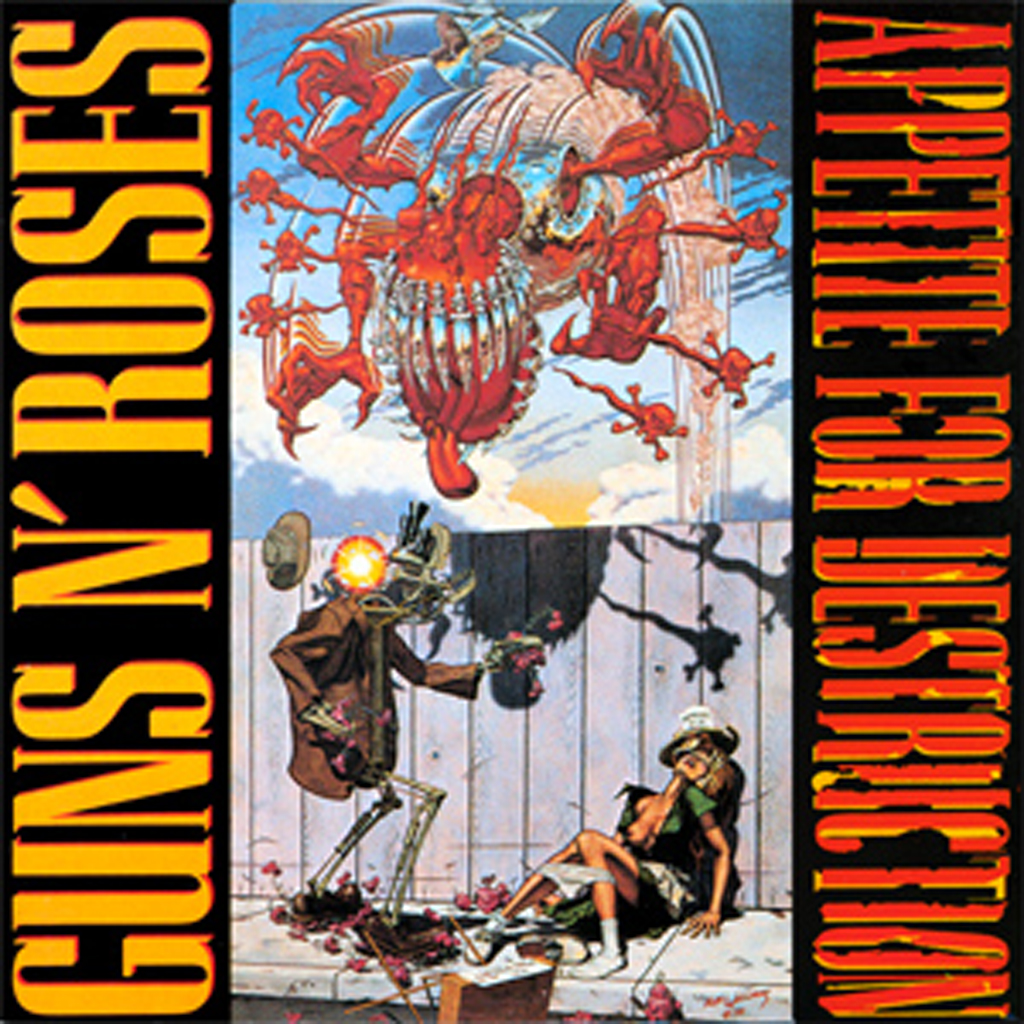
This is the album that made Guns N’ Roses. It also helped shape the rock landscape we see before us today. And it gave us the band who, in one fell swoop, redefined what rock’n’roll was all about in the days pre-Nirvana. A streetwise hurricane of equal parts Rolling Stones, AC/DC and Aerosmith, the members’ love of Hanoi Rocks gave them a glam dash, but underneath lurked a fertile hunger that was simply dangerous. Sex, drugs and rock’n’roll: that’s what the Guns N’ Roses who recorded Appetite For Destruction were made of.
Immediately courting controversy when MTV complained about the sleeve – artist Robert Williams’ own Appetite For Destruction sleeve, depicting a robot rapist about to meet a suitably metallic end, was replaced with an image of a cross and five skulls representing the five band members – Appetite… is very successful because it is very real. The bitterness and hatred for their own environment that can be found on the likes of the heroin-addled Mr. Brownstone (‘I get up about seven/get out of bed around nine’), the plea for something better in Paradise City (‘Captain America’s been torn apart/he’s a court jester with a broken heart’) and the bleak paranoia of Out To Get Me is all real. But imbued with an innate sense of musical perspective and bonded almost by blood (in the case of the band’s drug users), this is rock’n’roll at its purest and most effective.
It wasn’t just the stark reality, though. These five young men knew how to pen a killer rock tune, and better still, deliver them on stage with fearsome intent. The juddering carrion-cry of opener Welcome To The Jungle, the simplistic It’s So Easy and the pile-driving Rocket Queen, these are all from the top drawer of hard-rock songwriting. And yet in the massive hit Sweet Child O’Mine Axl displays an unerring sensitive side that would further surface later. All five musicians are on top of their game, delivering with venomous aplomb.
A dirty, frightening but undeniably great hard rock album, with the bittersweet allure and terrifying sting that was much the same as the heroin the band pumped into their veins. And it was just as addictive, too.
GN’R Lies (Geffen, 1989)
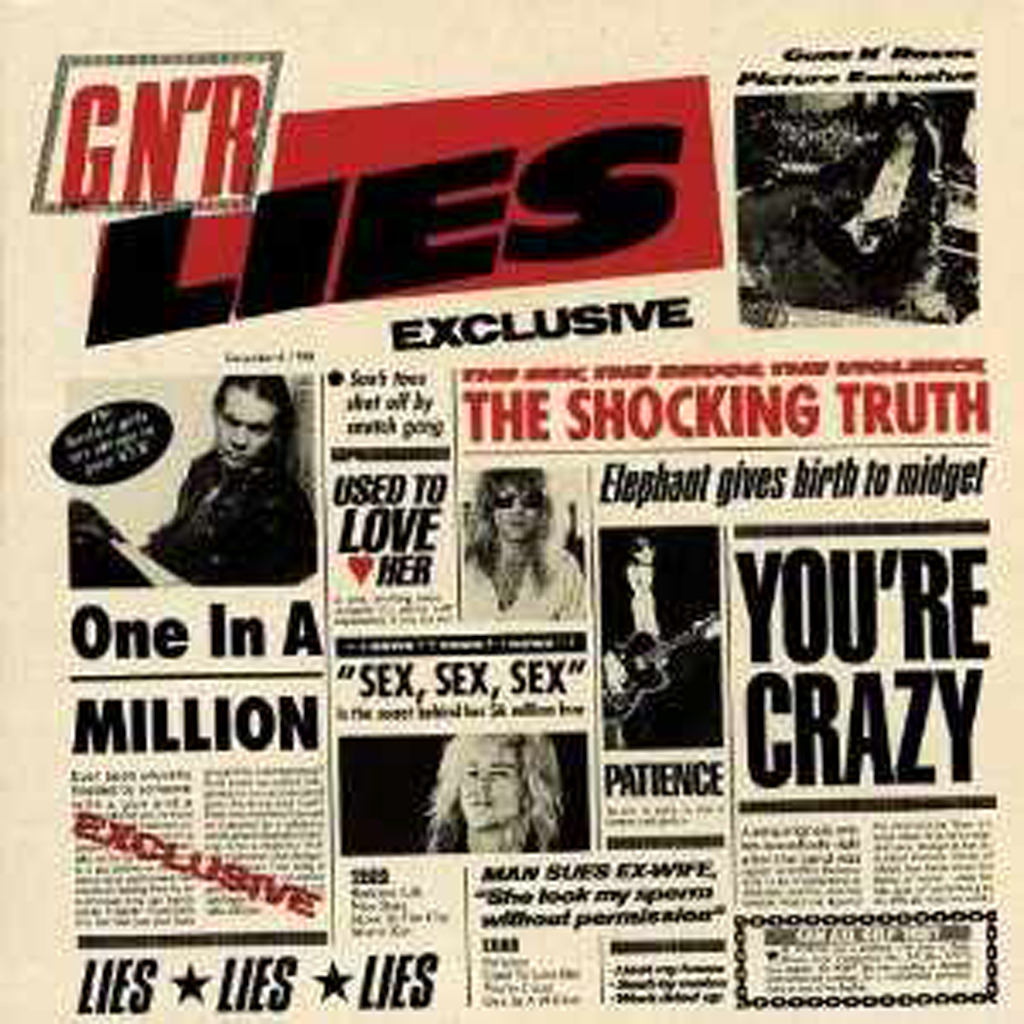
‘Policemen and n*****s, that’s right, get out of my way,’ sang Axl on One In A Million – and that was all before you got to the homophobic slurs and the pops at immigrants. The simpering Patience might have been the big hit, but it was this song that grabbed the headlines. It'd be enough to end a career in 2020, but in the late 80s? Not so much.
The simmering rage and paranoia that lay beneath the surface of many of the songs on Appetite For Destruction exploded full-force on this one song, attracting the kind of headlines most bands wouldn’t want – but ones that would increasingly become the norm for GN’R.
One whole side of this stop-gap mini-album featured the live tracks from the now rare Live ?!*@ Like A Suicide, including wild covers of Rose Tattoo’s Nice Boys and Aerosmith’s Mama Kin. The acoustic side showed another fine side to the band, but alas on One In A Million Axl went closest to the knuckle. Were these his thoughts or the words of a character who bore a relation to the boy he used to be? You decide.
Use Your Illusion I (Geffen, 1991)
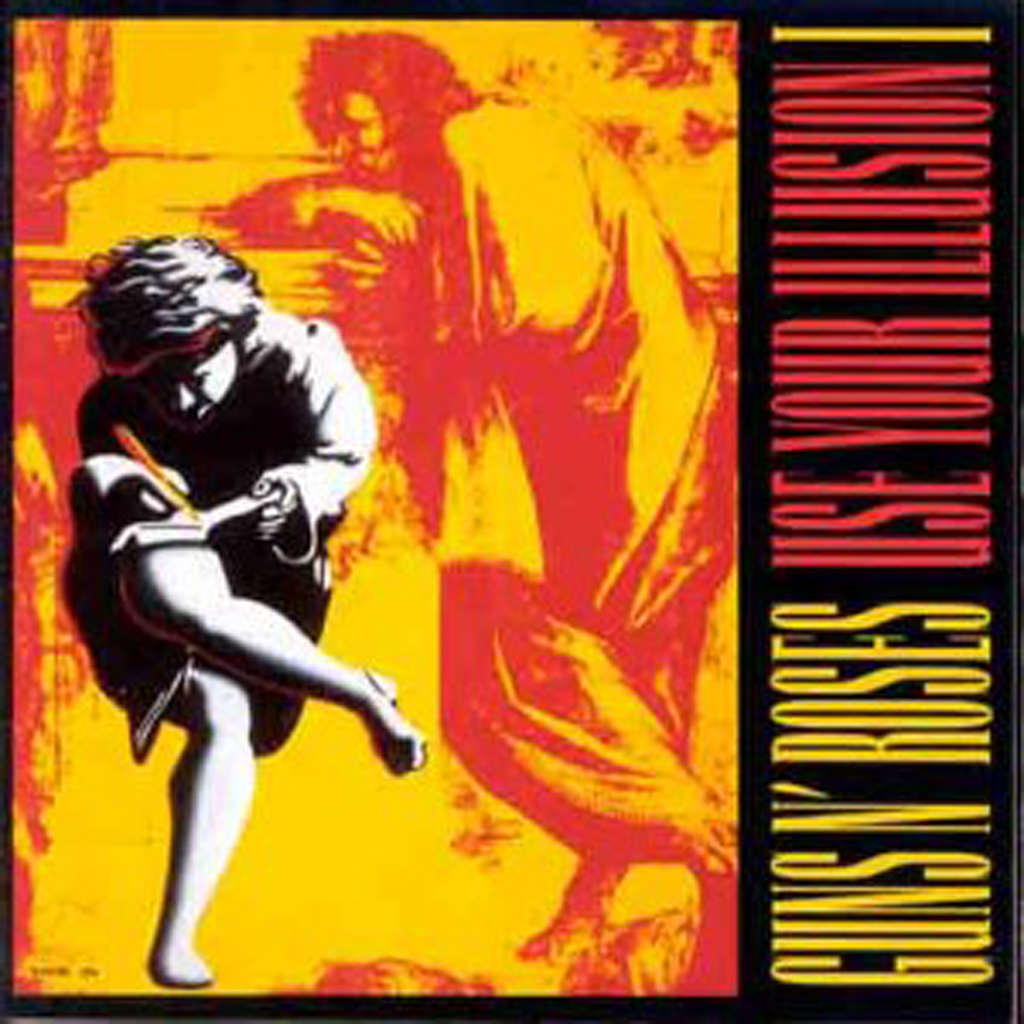
By their release in September 1991, both volumes of Guns N’ Roses’ Use Your Illusion had become the most anticipated follow-up to a debut that our fuddled old minds can recall.
Typical of being the biggest band in the world, Guns N’ Roses went for it in a major way. Some might say too much, for the overblown nature of Use Your Illusion went some way to alienating people against the band – though that wasn't a difficult feat in Rose’s case.
It’s true that from both volumes one could create a killer album – possibly to rival the debut – but the first of the two volumes (AKA the red and yellow one) highlighted all that was wrong with the band, which would eventually split them. The low-slung rockers of Slash and Izzy are at odds with the extravagant ideas of Axl, who saw himself as a cross between Queen and Elton John. The video for November Rain anyone? An occasional success, but all too often a failure.
Use Your Illusion II (Geffen, 1991)
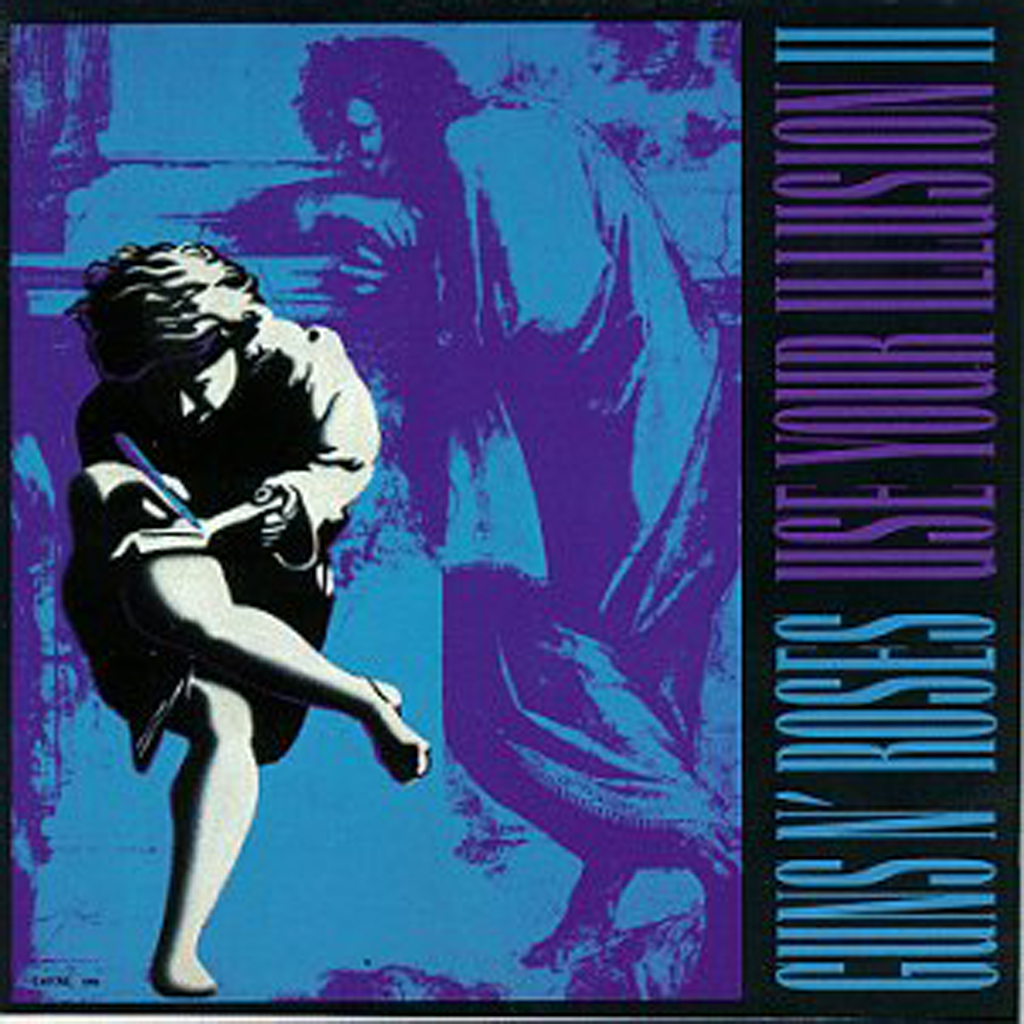
Released simultaneously with Use Your Illusion I in September 1991, the second of the two releases (AKA the blue and purple one) might not have rocked as hard, but its variety proved it had its very own spicy life.
If the first disc showed a band ripping apart between what they were best at (bluesy hard rock) and what their singer wanted (Elton John meets Queen), here they seemed settled.
True, Civil War and Estranged champ at the epic bit, but You Could Be Mine and Pretty Tied Up are two of the best rockers from both records. Bob Dylan’s Knockin’ On Heaven’s Door misfired in the studio (it never did live) and Get In The Ring was the sound of a grown man throwing his toys out of his pram. Still, this album certainly had its moments.
The Spaghetti Incident? (Geffen, 1993)
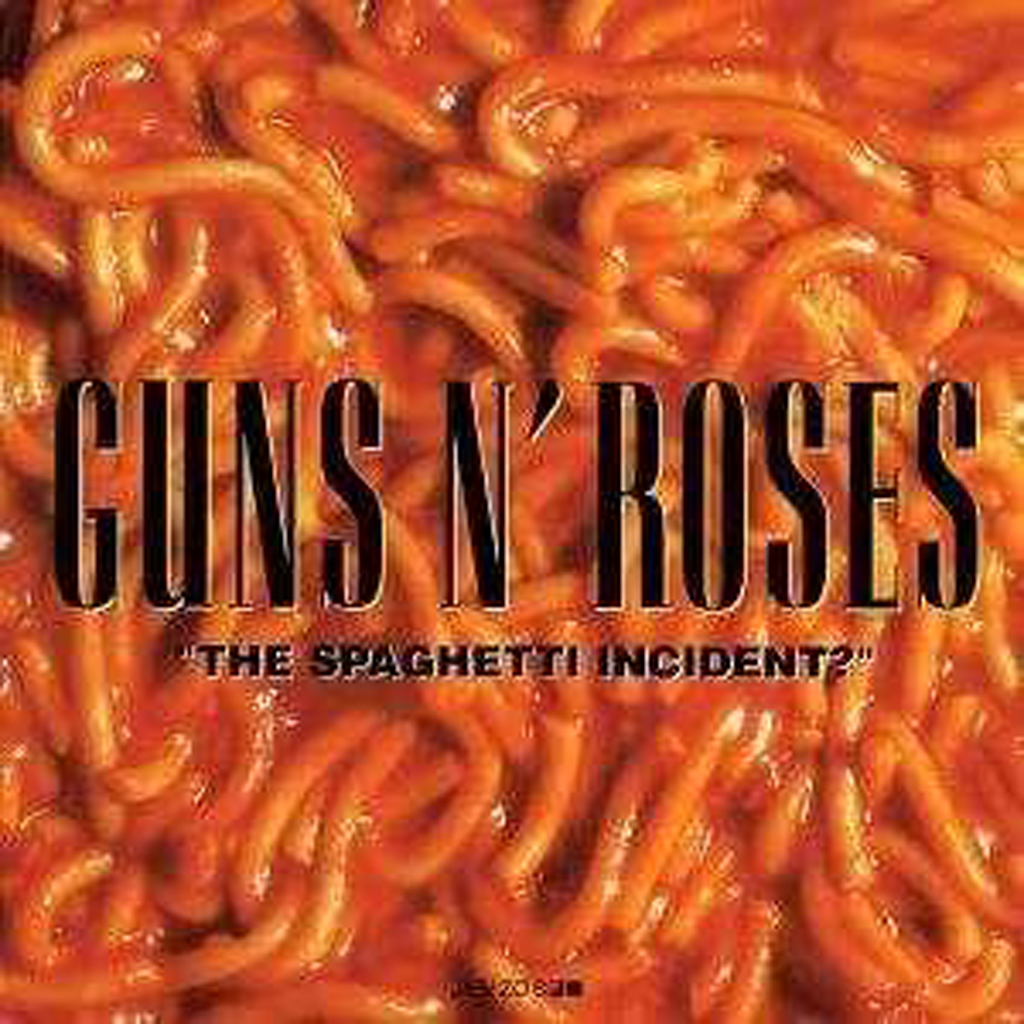
If it was a joke it wasn’t very funny – but then Guns N’ Roses have rarely been that. More likely it was intended to display the fact that Guns N’ Roses were actually a punk band in the face of Nirvana’s grunge attack, rather than the Hanoi Rocks-worshipping glam-metallers they really were.
It began life as an EP covering things like Iggy & the Stooges’ Raw Power and The Damned’s New Rose, but was expanded to a full-length album with the addition of Nazareth’s decidedly un-punk Hair Of The Dog and The Skyliners’ Since I Don’t Have You.
The addition of Charles Manson’s Look At Your Game Girl as an extra track was a similar kind of foot-in-mouth exercise as One In A Million had been. They sounded more like a bloated arena-rock band remembering some old favourite songs and playing them badly. In retrospect, probably even the band themselves would concur that Appetite For Destruction was a more punk affair than this.
Live Era ‘87-‘93 (Geffen, 1999)
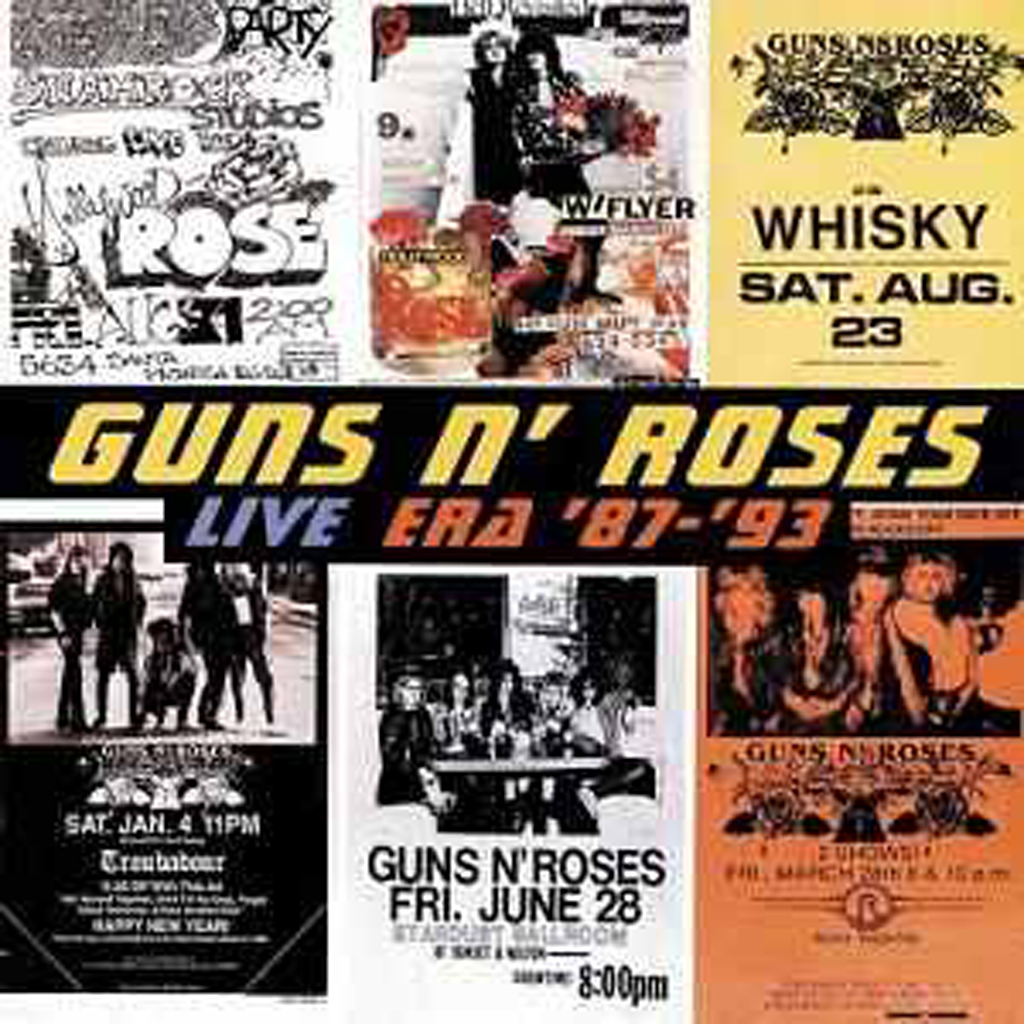
By 1999, the Guns N’ Roses most people loved were well over. It would be two years before Axl’s new rock’n’roll circus would take to the road, though even then reports of an alleged hair transplant gone wrong for Axl overshadowed any musical achievement by the new-look group.
Unfortunately for a band whose live show was once the envy of almost any rock band that shared the planet with them, this – the only official live Guns N’ Roses album to date – fails to deliver in the way the band themselves once could.
The main problem was the wide spread of material dates. By 1993, Guns N’ Roses were a pale imitation of the angry, hungry band of 1987, when they ripped the rock world to shreds. You can’t fault the choice of material, right down to the thumping Pretty Tied Up from Use Your Illusion II, but the latter cuts are dull. Still, all the evidence of what might have been is here.
Chinese Democracy (Geffen, 2008)
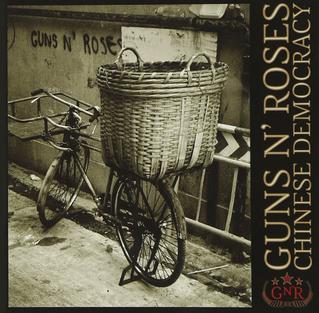
You had to see it right there in the shops to believe it. After 15 years, $13 million dollars, a revolving door of contributors and so many false starts that it had become a myth of the rock world, Chinese Democracy, the long-awaited new album from Guns N’ Roses, was finally out in the world.
The better part of two decades after Use Your Illusion I and II, it served as the first new GN’R studio album for a whole generation of rock fans, and would mean that Axl Rose could finally answer the questions that had been following him around for all those years in the wilderness. Questions like: who the fuck was actually on it? What does a Guns album without Slash sound like? And, most importantly, would it live up to 15 years of expectation and controversy?
Upon release, reviews were decidedly mixed. Rolling Stone described Chinese Democracy as a “great, audacious, unhinged and uncompromising hard-rock record”, awarding it 4 out of 5 stars. The Guardian gave it a solid but unspectacular 3 stars, stating that it “wears its agonising gestation like a badge of honour.” Many were less kind: Pitchfork gave the album a kicking, describing it as a “prosaic letdown”, while Metal Hammer gave the record a measly 5/10, bluntly asking, “where’s the swagger? The danger?”
Still, though, one thing is clear: Chinese Democracy is certainly packing some great songs. Better and the rowdy title track have deservedly stayed in GN'R setlists since Slash and Duff returned to the fold, Sorry is a wonderfully brooding mix of outlaw country attitude and doomy riffs, and There Was A Time is an epic worthy of the band that gave us November Rain and Estranged. A classic Guns N' Roses record? No, but somewhere, we suspect, there is a parallel universe where Axl released this as a solo album, and it was welcomed with more universally open arms.
